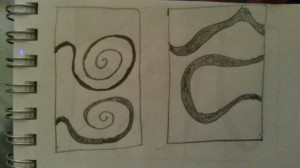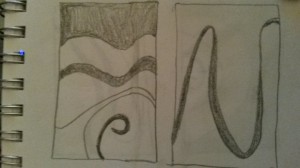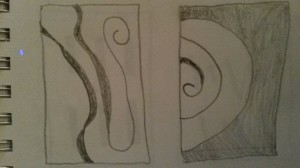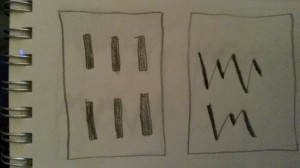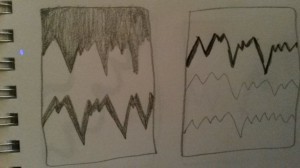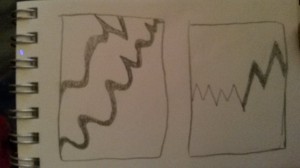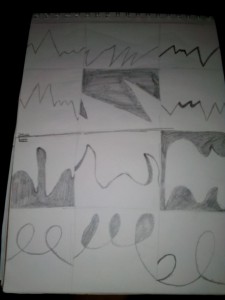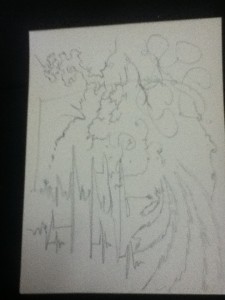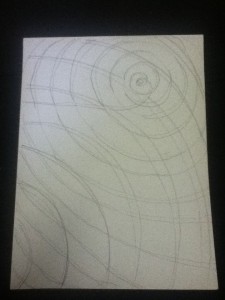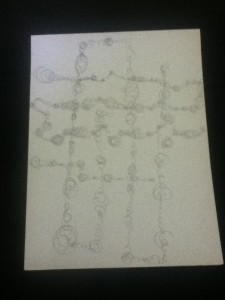These thumbnails depict my Steccato and Legato translations of the music pieces we heard in class. The heaviness and flow of the lines represent different aspects of the song that stood out to me. The patterns depicted show the flow or rhythm of the music as it played. After refining it I was able to zoom in on more important parts in order to add more detail.
Monthly Archives: September 2014
City limits Reflection
Colson Whitehead’s ” City Limits” opens our eyes to a new perspective concerning the “Old new york” and the ” Present new york”. He shows us that we each have our own version of how we see New York. He states ” You start building your private New York the first time you lay eyes on it” Colson is trying to convey that from the time you first experience New york in itself, is the moment you begin to remember it exactly how you first see it. However, as time passes, things slowly begin to change. Buildings may be replaced, new sky scrapers may be built, or even transportation changes. Despite this, you will never forget the way things were because that is what you originally experienced.
Throughout the text, Colson stresses that we don’t know when things are going to change around us. Therefore we never really get a chance to say goodbye to the many places we know so well and love. Anytime you go to the nearest pizza shop could be the last time you ever get to by from there. It really makes you realize that you should value certain things while they are still around. As I read the text, I thought of the well known line that states, “Nothing last forever”. Keeping in mind that New York is constantly changing and evolving, it is a weak chance that ones version of New york will always be reality.
Overlapping New Yorks (Chart)
Staccato/Legato Pattern Mash Up Prep and Reflection
Center For Book Arts, Rubin Museum Reflection
During this trip I observed some interesting things. There were many ways that people used to print things way before we have the printers we have today. Pretty much every aspect that went into creating and printing a poster or piece of paper was pretty tedious. At first I thought going to a book arts place would be boring and when the long winded man began talking I thought I was correct but seeing the different zines for myself inspired and excited me to want to make my own zine and learn more about them. Then we went to the museum and the art was slightly disturbing but at the same time interesting, and I did have fun drawing my favorite piece of art at the gallery.
Summary of the reading, “City Limits”
To think New York wasn’t the New York that’s infront of you. That’s strange to think about as you gaze at the Freedom tower. But the tower wasn’t always there. You just believe or imagine having your own New York to make you feel at “home”.
Colton whitehead, whom wrote the reading, “City Limits”, states that as the years go by, old New York is changing rapidly without everybody knowing or being herald. So it can’t ever come back. He still sees some buildings now as they were in the past. He even says that the people who own those old buildings didn’t even know that it was neglected and abandon,so, it was gone without saying goodbye. Even if we don’t see or know the Old or new New York, whithead states that the city knows everything about us. Basically, he says you can have your own New York but it’s wrong.
Summary: City Limits by Colson Whitehead
In the passage “City Limits” Colson Whitehead describes what being a New Yorker is all about. A New York is not hear or seeing, its about living the present and knowing the past. Whitehead is sort of mentioning that it doesn’t matter how long you have lived in New York, what counts is able to reflect any situation that happens around your New York. It all starts with how New York was introduce. To many people New York City was first seen by different reasons however, from there we all start to create our own perspective of New York. In the third paragraph , Whitehead starts to mention about how he views his New York. He starts to describe about what became his New York, he describe every inch and how everyone living or knowing New York City should have experiences but just myth about New York. He later mentions about building, how it starts to change when one building is torn down and a new is build in its place. How we don’t notice any change until its gone. However, the point is to move forward because New York will continue to change with us. No matter what happens we have to accept the new and face forward our New York is changing.
Aural Topographies : Research
The piece of music I listened to was called [Paper Planes by Virtual Riot]
The song begins with slowly and quietly the image of it moves like a sine wave, the sound is very smooth. After the initial part, the song introduces a couple piano keys and a electronic static sound. The speeds increase until the minor drop in the bass, then a variety of shapes explode they feel like geometric shapes, where the sharp angles should be its replaced with curvature and this pattern echos. This song gives up a very electrical vibe infused with both parts staccato and legato and frequently alternates. Near the center voices are mixed in, however words aren’t spoken they are sounds, this gives off a haunting or chilling vibe but this allows also a calming relaxing feeling. At this point the lines slow back down to a wave motion. Then the first part of the song repeats with slight differences. The volume fluctuates throughout the song to illustrate a shift.
When I visualize this song, I can see a range of many colors such a shades of yellows, blues, purples. The sounds flow linearly in a slow sine wave motion then eventually shifts to jagged wave at high frequency and then lowers. This is where the colors of blue and purple phases in and out alternatively, while in the background the continuous beats are represented as circles pulsating. I feel as if the static noise is what unifies this both auditory and visually.
Aural Topographies: Experiments
Class 7: focus on Project #2
Today, in addition to continuing to talk about Colson Whitehead’s “City Limits” and his earlier version, “The Way We Live Now,” and summary, and revision, and brainstorm about Project #2, let’s also look at a visual text. Here are two versions of Saul Steinberg’s “View of the World from 9th Avenue”:
- as the cover of The New Yorker, March 29, 1976.
- not as the magazine cover, on the Saul Steinberg Foundation website.
Let’s think about how this map compares to those we looked at or drew for our walks, and how it relates to Project #2, to Whitehead’s ideas, and to our experiences as New Yorkers.
